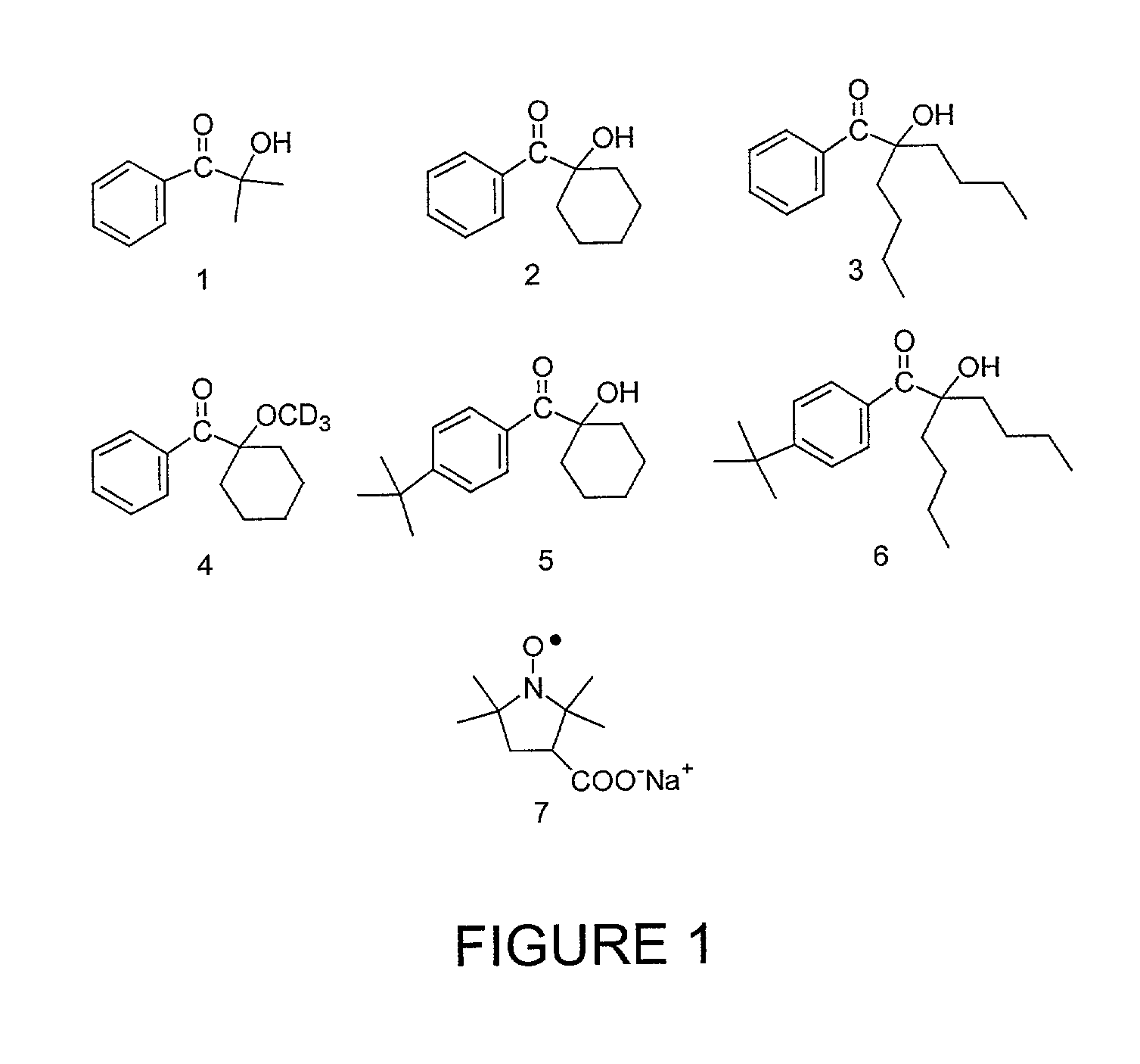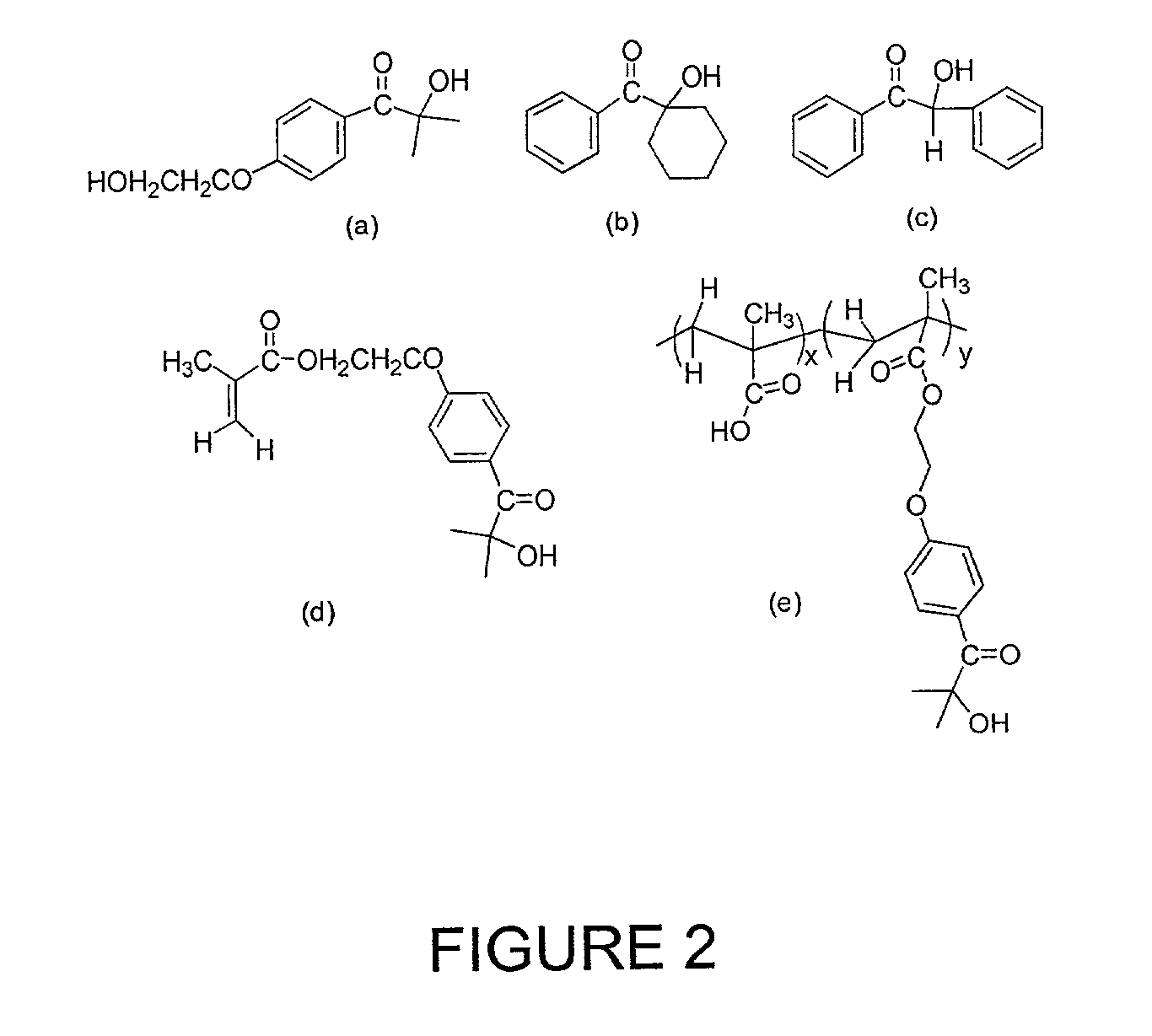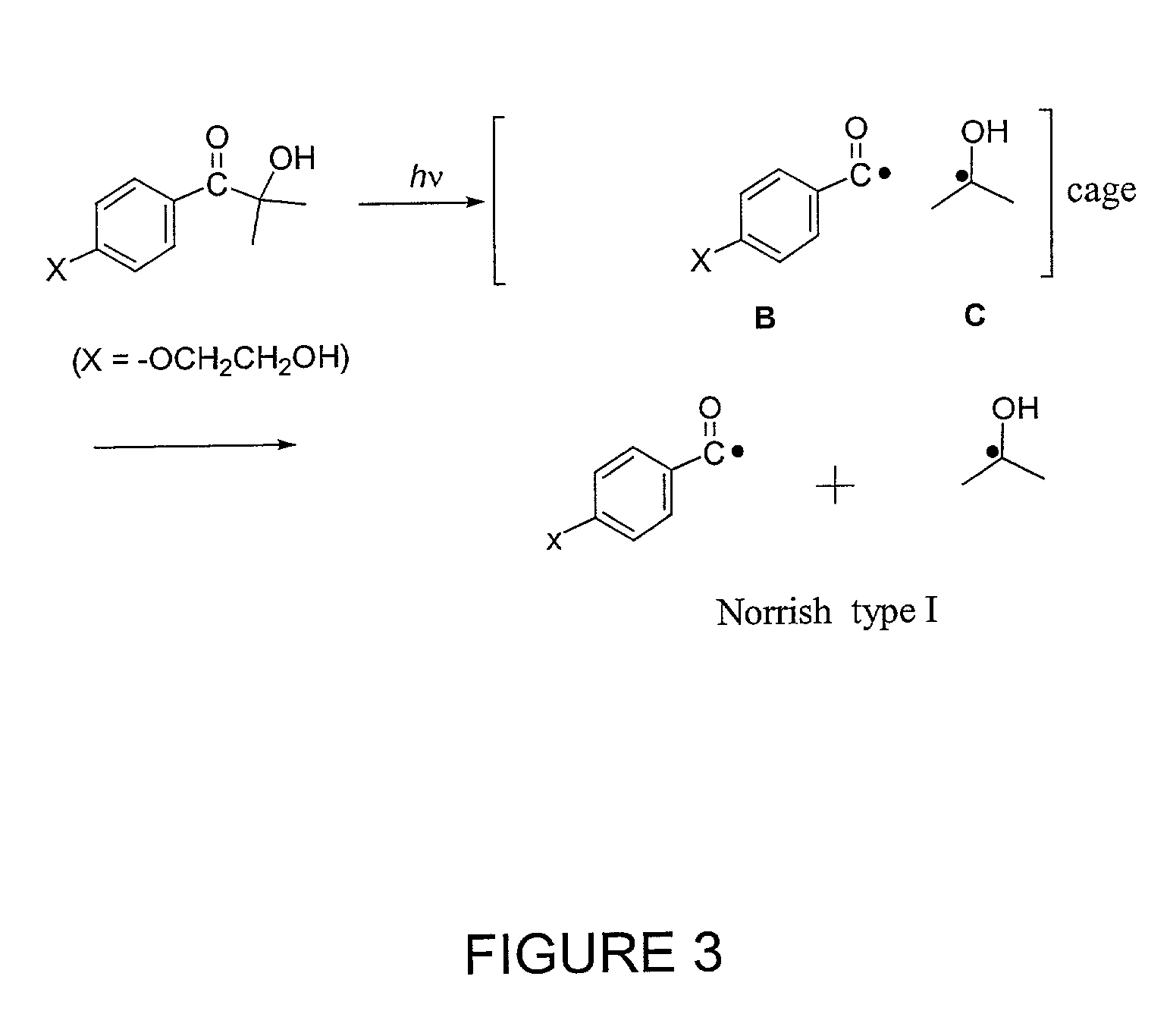Hydrogels and methods for their production
a technology of hydrogels and hydrogels, applied in the field of polymerization, can solve the problems of not being subject to the utmost control and many aspects of photopolymerization are incompletely understood, and achieve the effects of reducing the number of hydrogels
- Summary
- Abstract
- Description
- Claims
- Application Information
AI Technical Summary
Benefits of technology
Problems solved by technology
Method used
Image
Examples
Embodiment Construction
[0049] The present invention involves novel methods and compositions of matter for controlling the initiation of polymerization of monomers in water and for synthesizing new hydrogels. The present invention also involves the new hydrogels. The following description is presented to enable one skilled in the art to make and use the invention, and is provided in the context of particular embodiments and methods. Various modifications to the disclosed embodiments and methods will be apparent to those skilled in the art, and the general principles set forth below may be applied to other embodiments, methods and applications. Thus, the present invention is not intended to be limited to the embodiments and methods shown and the inventors regard their invention as the following disclosed methods, apparatus and materials and any other patentable subject matter to the extent that they are patentable.
[0050] .sctn. 4.1 Functions
[0051] A first aspect of the present invention may function to prov...
PUM
| Property | Measurement | Unit |
|---|---|---|
| temperature | aaaaa | aaaaa |
| pH | aaaaa | aaaaa |
| pH | aaaaa | aaaaa |
Abstract
Description
Claims
Application Information
 Login to View More
Login to View More - R&D
- Intellectual Property
- Life Sciences
- Materials
- Tech Scout
- Unparalleled Data Quality
- Higher Quality Content
- 60% Fewer Hallucinations
Browse by: Latest US Patents, China's latest patents, Technical Efficacy Thesaurus, Application Domain, Technology Topic, Popular Technical Reports.
© 2025 PatSnap. All rights reserved.Legal|Privacy policy|Modern Slavery Act Transparency Statement|Sitemap|About US| Contact US: help@patsnap.com



